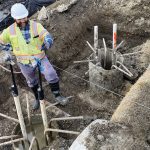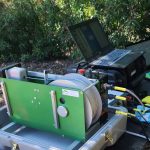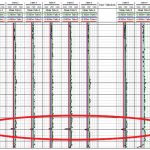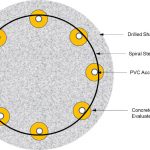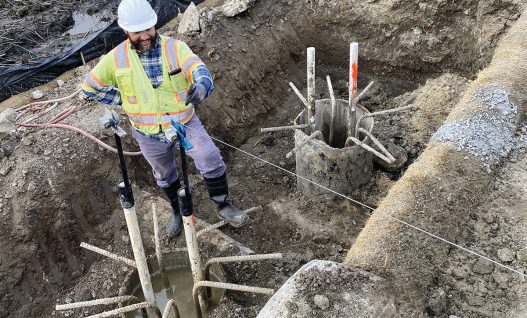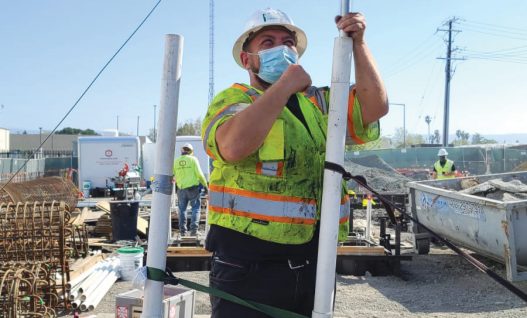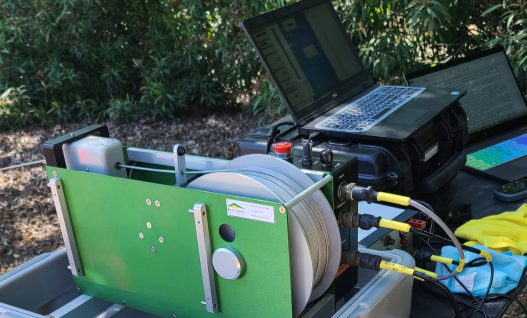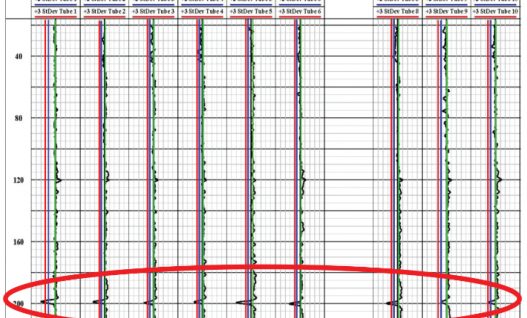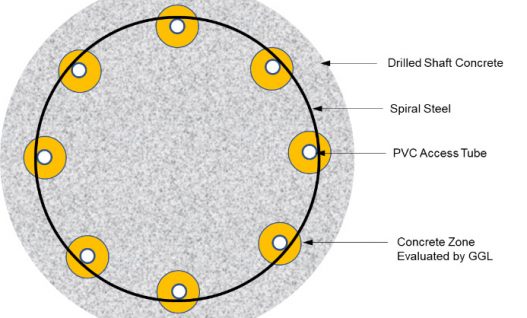Gamma Gamma Logging (GGL)
Assessing Drilled Shaft Integrity with Gamma-Gamma Logging (GGL)
Gamma-Gamma Logging (GGL) is a non-destructive test method used to assess the concrete integrity of drilled shafts. Two-inch diameter PVC access tubes are attached to the steel reinforcing cage prior to cage insertion into the shaft excavation and concrete placement. In cases where testing was not initially planned, GGL can be performed using core holes drilled through the concrete.
The test probe contains a low-level radioactive source at the probe tip and a shielded detector located 15 inches away to assess the concrete density surrounding the access tubes or core holes. The GGL method is one of the two integrity test method that can evaluate concrete quality outside the reinforcing cage as shown above. In general, the access tubes (or cored holes) should be located at least two inches from longitudinal reinforcement, with several tubes installed in each pile to allow for multiple readings.
The 4 foot long probe is lowered into each access tube using an electric winch. Gamma radiation counts in counts per second (CPS) are logged as the probe is raised. Profiles of the average bulk density in pounds per cubic foot versus depth can then be presented based on calibration data.
GGL assesses the bulk density of the concrete from the center of the access tube outward for a radial distance of about three to four inches using the low energy source. For each access tube, the GGL density count per second is plotted versus depth with the mean value, two standard deviation, and three standard deviation lines displayed. Substantial drops in average bulk density in excess of the standard deviation thresholds identify anomalous concrete zones as indicated at a depth of 200 feet in the data presented below.
GRL engineers report Gamma-Gamma Logging results on a density vs depth plot in accordance with CALTRANS CT-233 test standard.

